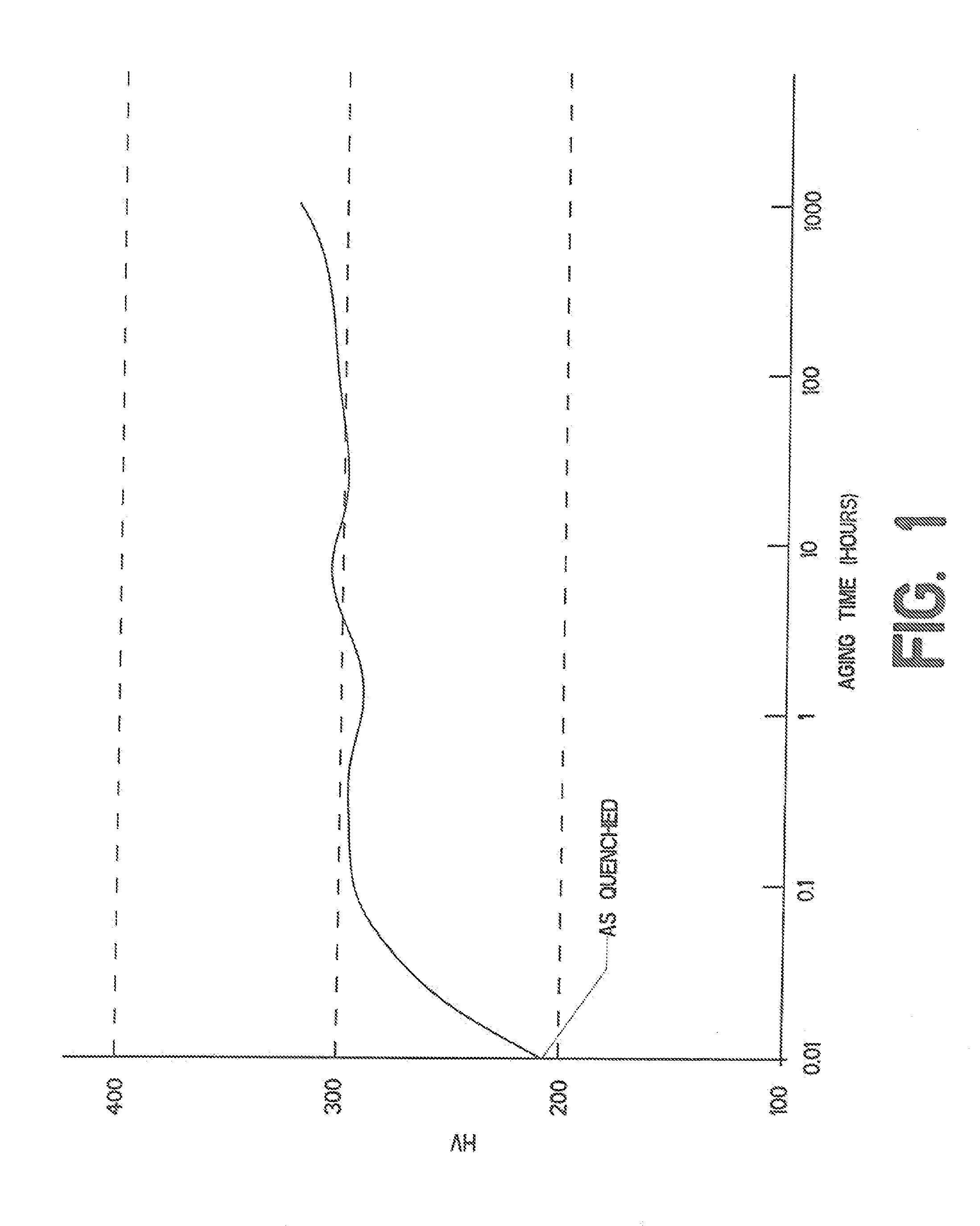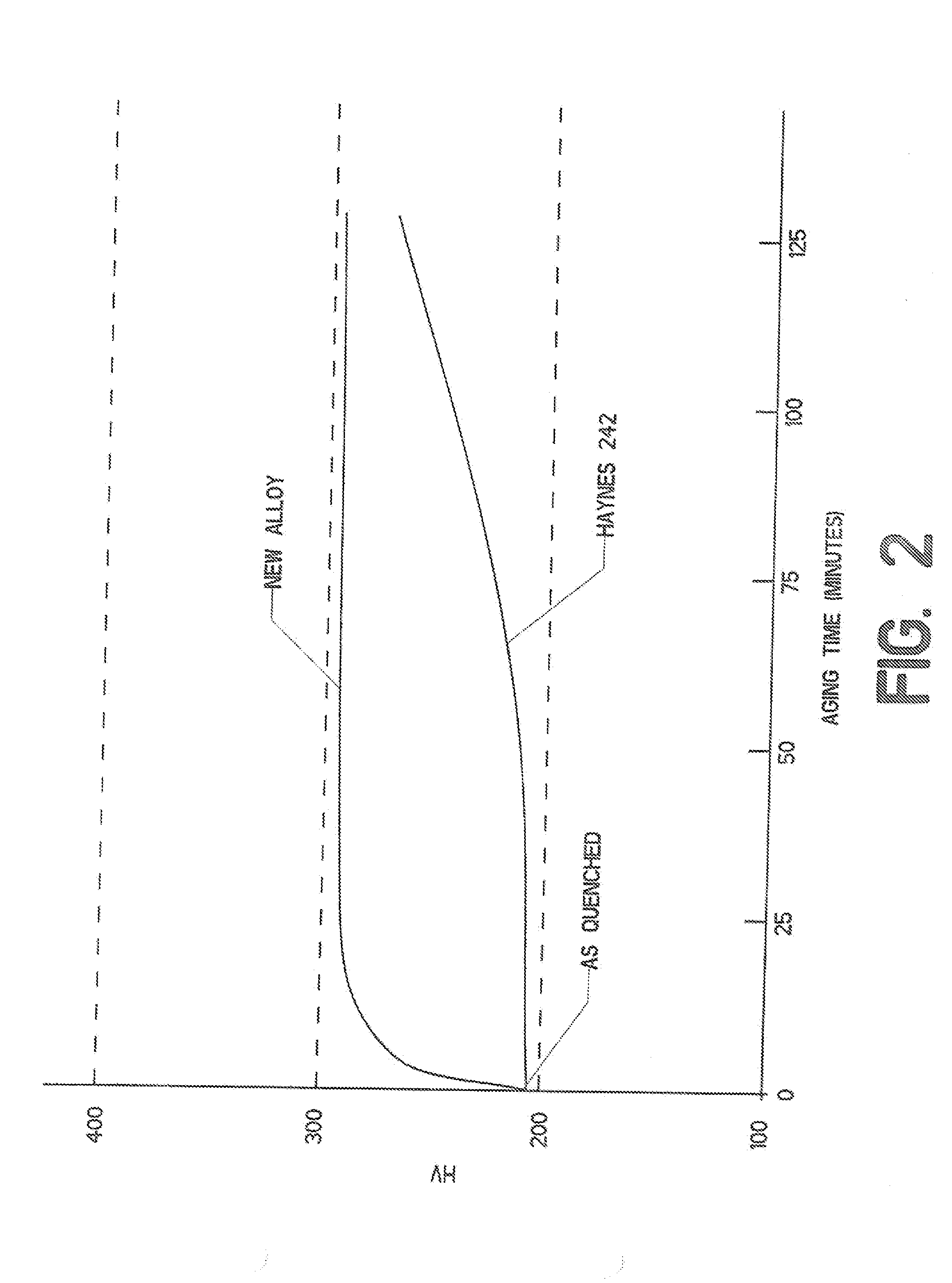Age-Hardening Process Featuring Anomalous Aging Time
a technology of age hardening and anomalous aging time, applied in the field of metalurgy, can solve the problems of increasing the time required, increasing the cost of labor, and increasing the amount of energy required for conventional precipitation hardening, so as to achieve less time and less energy expenditure, the effect of aging hardening
- Summary
- Abstract
- Description
- Claims
- Application Information
AI Technical Summary
Benefits of technology
Problems solved by technology
Method used
Image
Examples
Embodiment Construction
[0023]The present invention uses alloys made of Cr—Ni—Mo—Re, which are formulated to allow a very different age hardening process from the prior art alloys. The alloys thus formulated can be age hardened in as little as 5 minutes. The same alloy shows stable mechanical properties without over-aging even after a prolonged aging period (up to 500 hours). Thus, the “window” of optimal time for age hardening is quite broad.
[0024]The new allow was based on a Ni—Mo—Cr alloy, to which rhenium was added. The Ni—Mo—Cr alloy has a face centered cubic structure above about 1123 K with short-range-ordered (SRO) domains. Long-range-ordered (LRO) domains of A2B form below 1123 K after a prolonged aging time. The alloys are strengthened by aging when LRO precipitates form. The formation of LRO is beneficial to the alloy's mechanical properties.
[0025]The prior art approach to accelerating age hardening uses cold deformation before the heating process. When a sample of Ni—Mo—Cr is 40% cold worked an...
PUM
| Property | Measurement | Unit |
|---|---|---|
| Temperature | aaaaa | aaaaa |
| Temperature | aaaaa | aaaaa |
| Temperature | aaaaa | aaaaa |
Abstract
Description
Claims
Application Information
 Login to View More
Login to View More - R&D
- Intellectual Property
- Life Sciences
- Materials
- Tech Scout
- Unparalleled Data Quality
- Higher Quality Content
- 60% Fewer Hallucinations
Browse by: Latest US Patents, China's latest patents, Technical Efficacy Thesaurus, Application Domain, Technology Topic, Popular Technical Reports.
© 2025 PatSnap. All rights reserved.Legal|Privacy policy|Modern Slavery Act Transparency Statement|Sitemap|About US| Contact US: help@patsnap.com



